Eclectic Knitwear Designer Pierre-Louis Mascia Makes His Foray Into Home
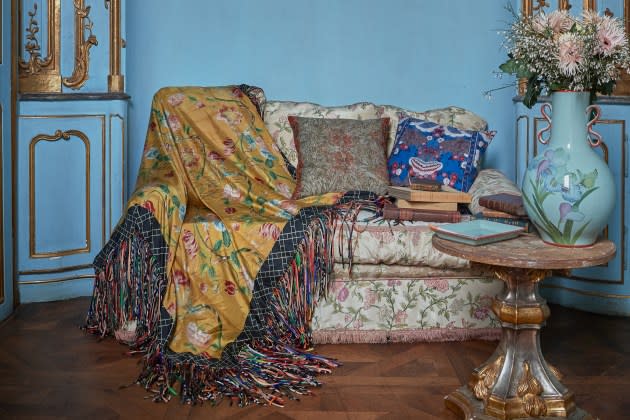
Pierre-Louis Mascia is in the business of world building.
The French ready-to-wear designer famous for his eclectic knitwear has expanded into interiors and homewares with a collection of silk wallpaper and room dividing screens, as well as blankets and cushions. Homewares include terracotta tableware, tablecloths and vases.
More from WWD
EXCLUSIVE: Anthropologie Taps Artist Alexandra Farmer for Summer
Paris Trade Shows Look to Sweet Spots During a Challenging Market
“We were not trying to develop really a home collection, in a sense, but we were thinking about a space where an artist can invite other artists to share their creations with other creators. I liked the idea of this family of artists built around a decor, the decor of fine arts,” he says.
Cue the silk-covered drawing boards and notebooks, as well as stationery. Silk pajamas, bathrobes and slippers complete the tableau.
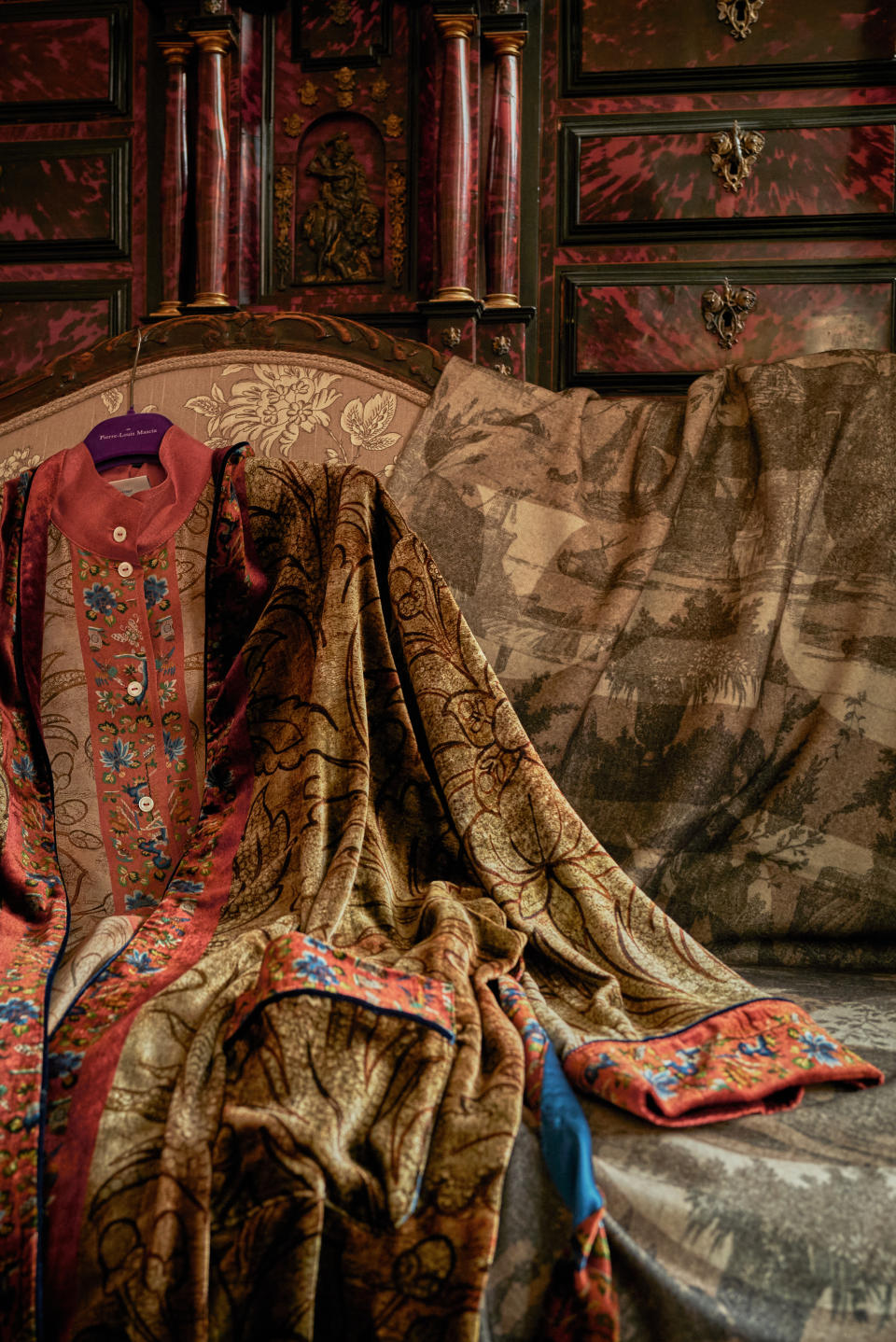
The collection was in the works for two years, to translate his prints to new textiles. “It’s been two years now that we’ve really been working on prints to develop a whole universe around the brand, around the home,” he says of the collection.
To hear him describe it sounds like a screenplay pitch. “Now with the link between the [ready-to-wear and home] collections we have a total universe and we can develop a story. It’s the story of a family of artists who travel around Europe, around the world and cross borders.” A very well-dressed family at that.
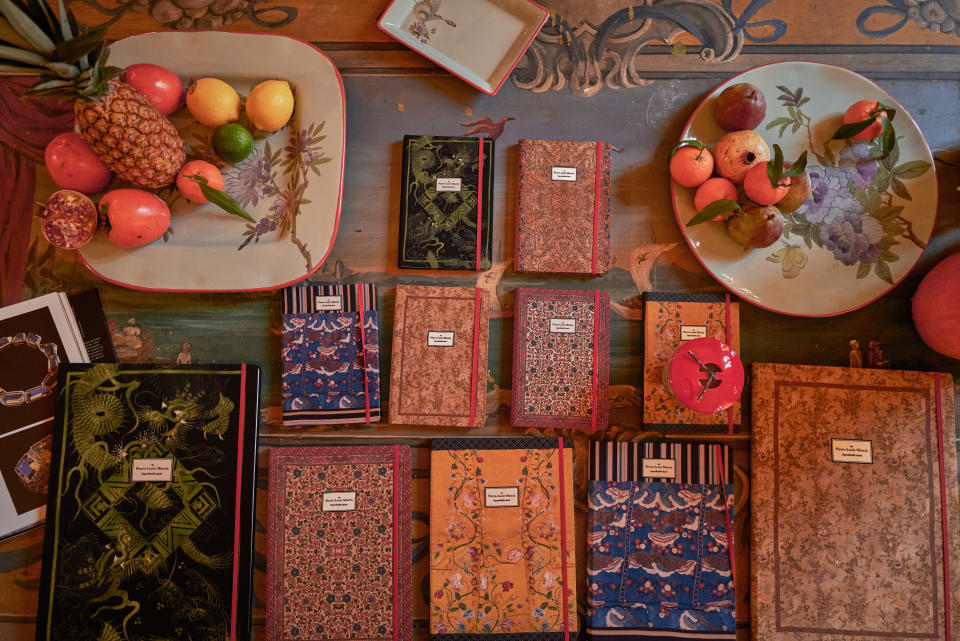
The collection features plenty of intricate florals on textiles and touches such as butterflies on tableware.
“The inspiration for the prints comes from nature, which shapes our vision and our way of looking at the world. First of all, it’s the geography where we live in — I grew up surrounded by nature, and the nature had prints. It was made up of color and rhythm and, as a result, that’s what shaped my imagination and the colorations and so on,” he says. The shades are soft and woodsy, morning sky and evening amber.
“Nature shapes our vision and our way of looking at the world. If I’d lived by the sea, I might have seen the world in blue and yellow like [Simon Porte] Jacquemus, but I prefer to have a more nuanced version of color,” he says of the palette.
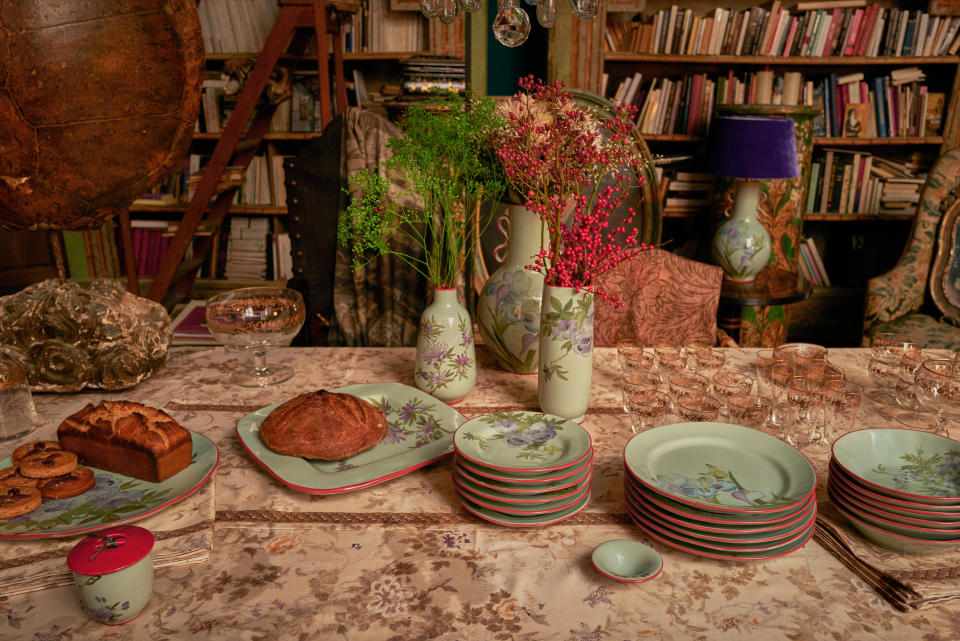
Masica, former artistic director of Salon Who’s Next, trained as an illustrator and learned the Japanese art of making and drawing on fine fiber paper before launching his own label in 2007.
He searches antiques markets across Europe to fill his warehouse in the southern French city of Toulouse with treasures. “It’s a cabinet de curiosités, but in a simple way,” he says. “I don’t like to do ‘archives.’ My first feeling is what makes my heart beat and I know it works, I know I can do something with it.”
His atelier warehouses a vast collection of antiques, from acquiring an archive down to singular items.
“I collect like an artist. It could be something as simple as a sheet of paper. There are no rules,” he says. He uses his curiosités as the foundation for new prints and designs, reworking the proportions or adding slight geometric elements.
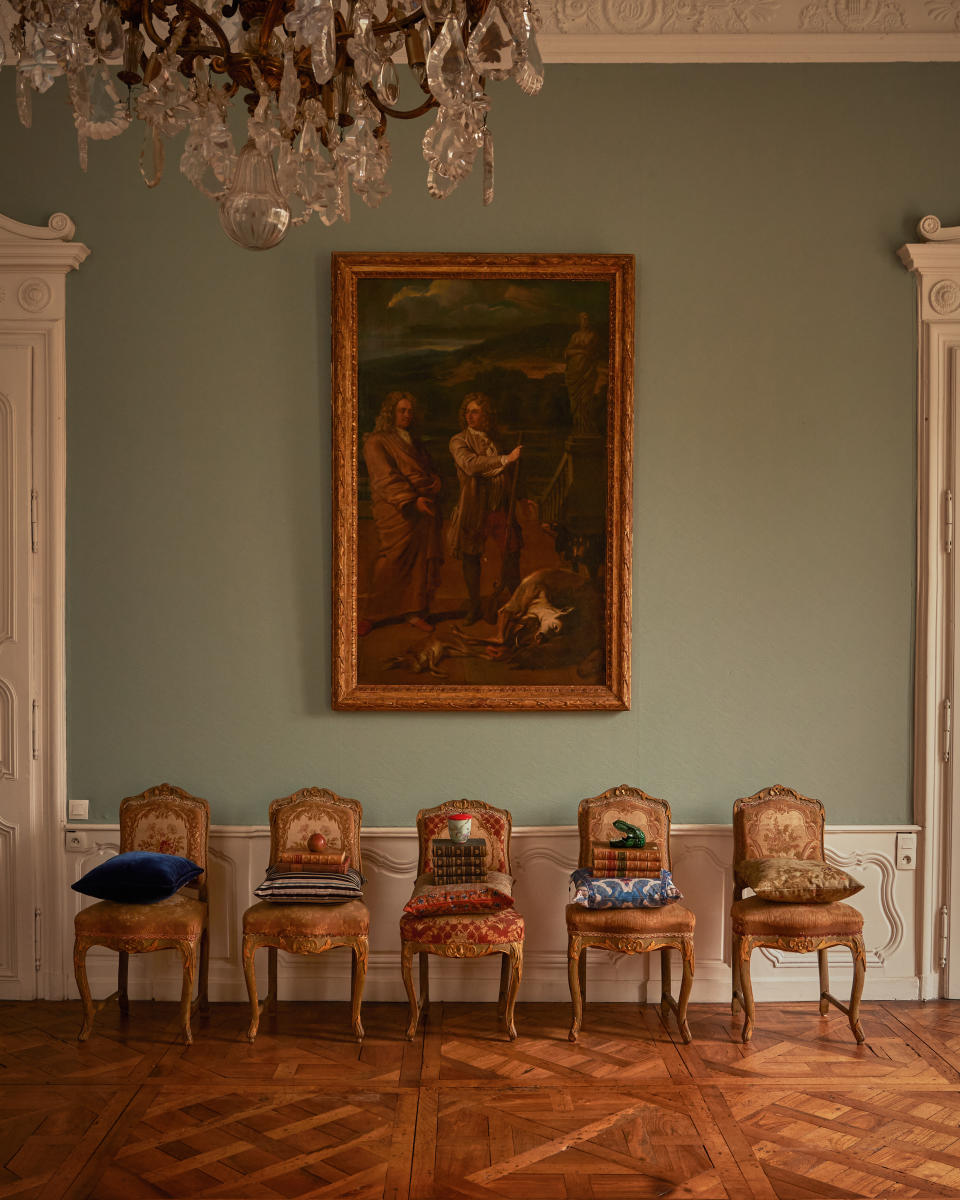
The collection is created with the longstanding brand partner Achille Pinto, which makes all the textiles and which are printed in Como, Italy, and Nuevo Forme, which makes all the ceramics and earthenware “somewhere between craftsmanship and production” at their workshop in Tuscany.
Produced in Italy, the line is also a love letter to the country.
“For us, it’s the soul. We cannot imagine doing it in another country. It’s the mix between joie de vivre and savoir-faire,” he says. “For a brand to develop a home collection is having a look at who you are and what you are, and it’s a very exciting exercise. It’s ultimately an act of introspection.”
The ceramics and cushions range in price from 100 to 300 euros, while luxurious throws are 1,200 euros. Mascia will have the collection in his own homes — that is, his flagship stores in Milan and Portofino, Italy, and Cannes, France.
“I am always thinking we are a niche, a special brand, because we are not really in fashion and we are not really out of fashion. We follow our own way. We create a personality and we try to be it. We are looking for real emotion.”


